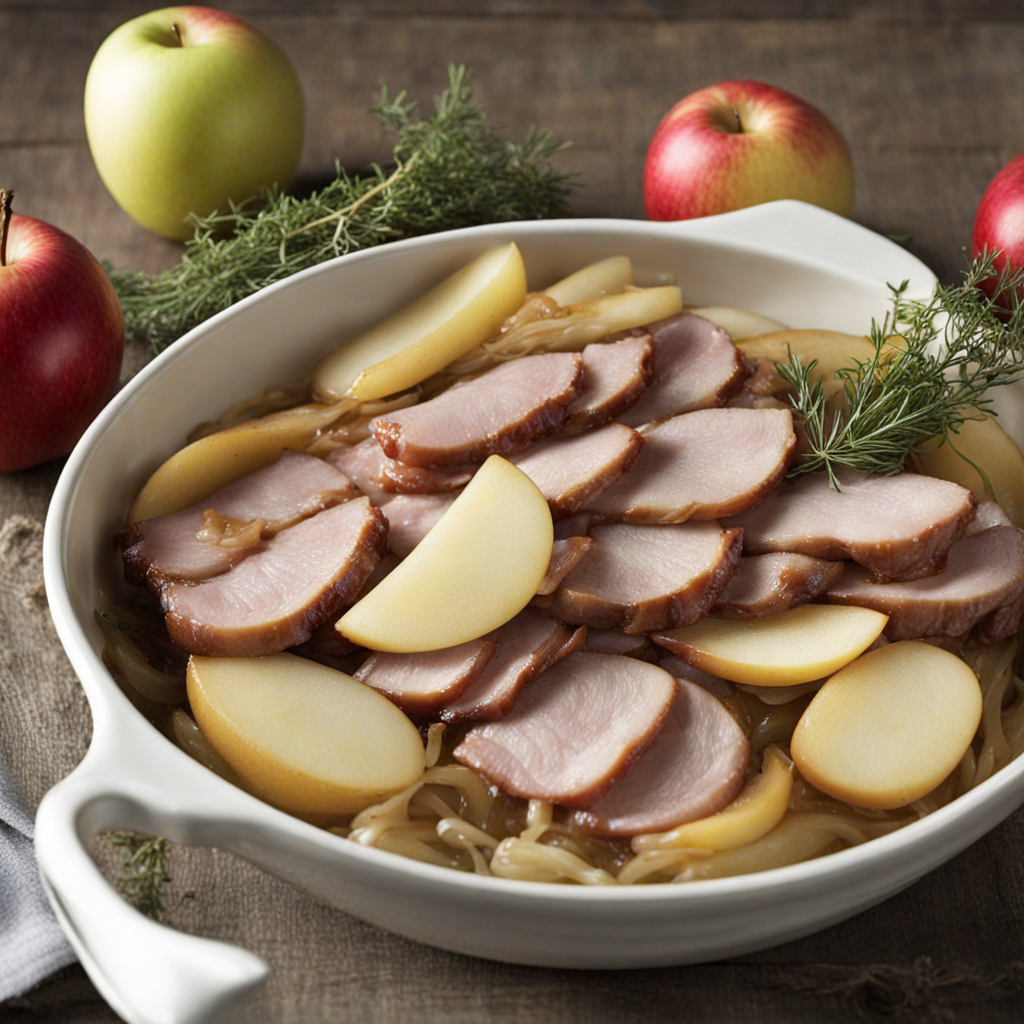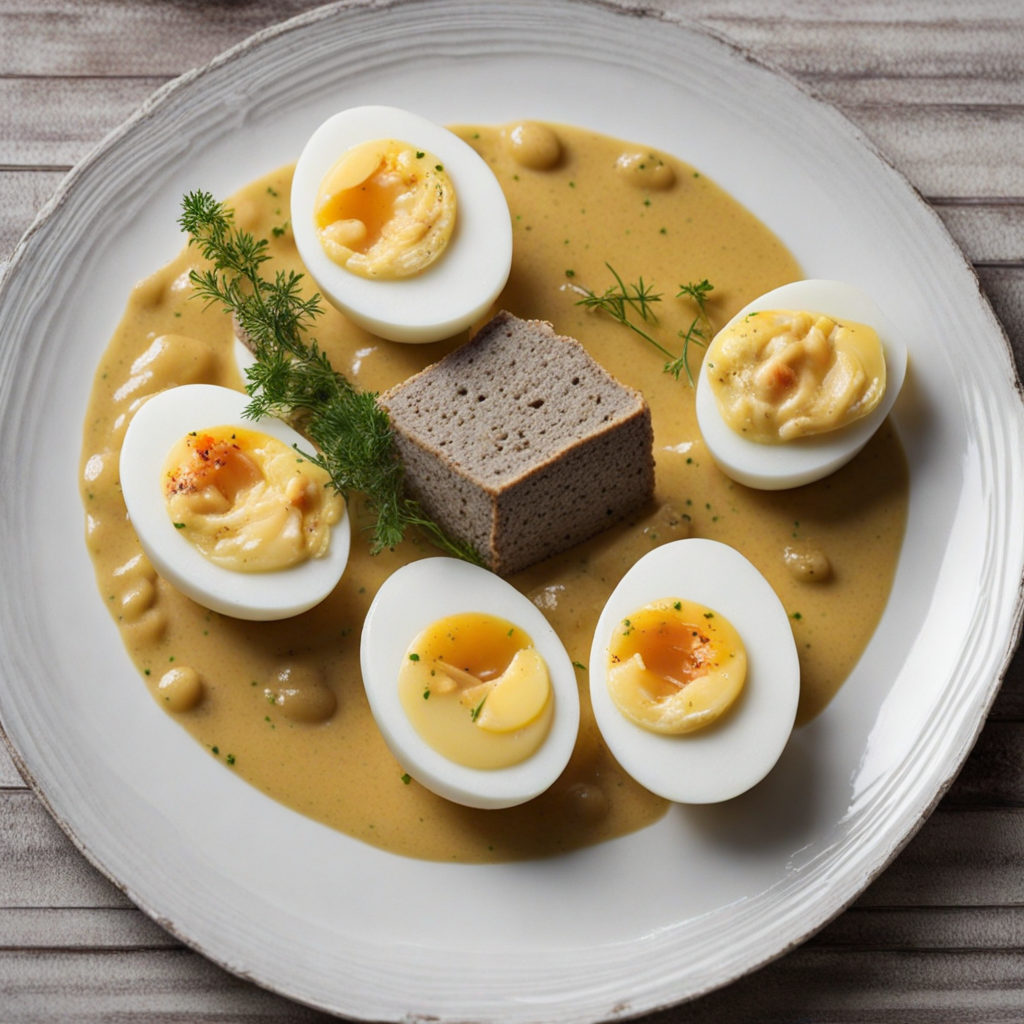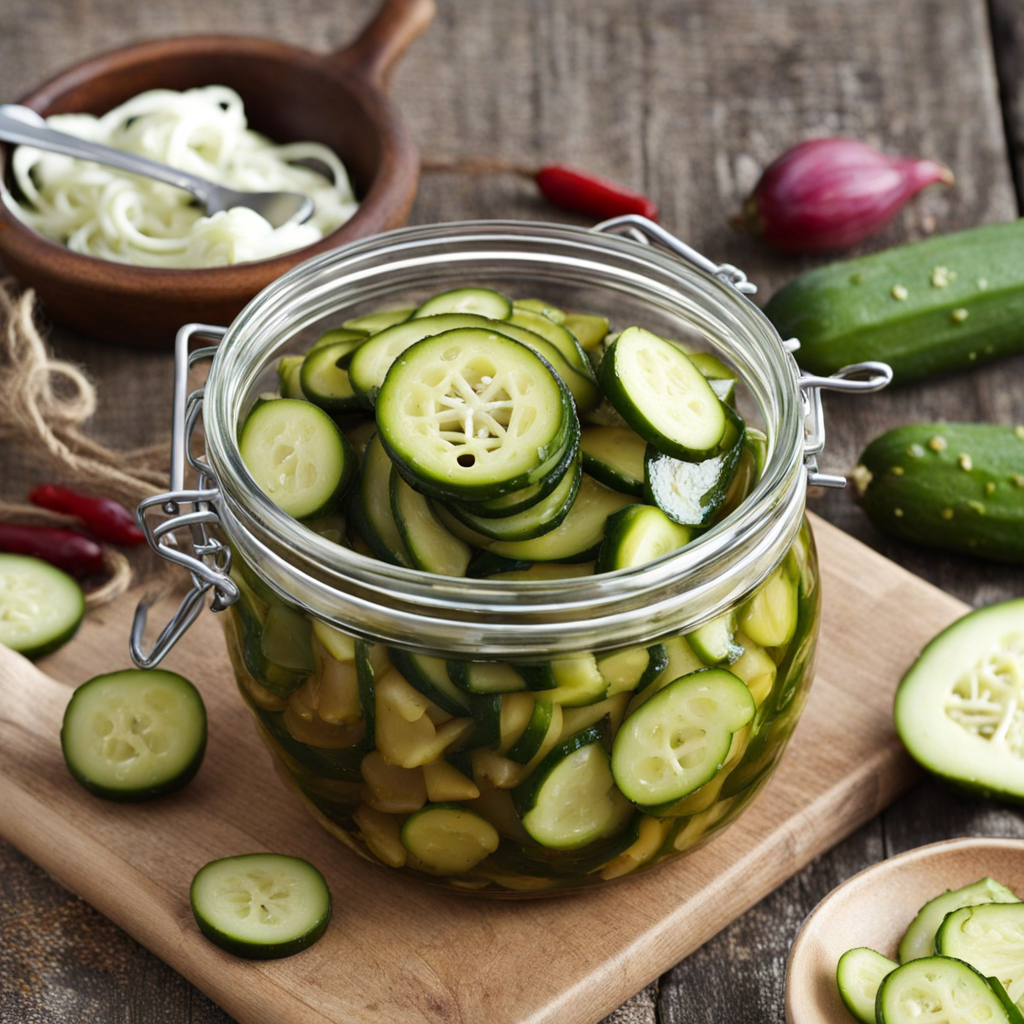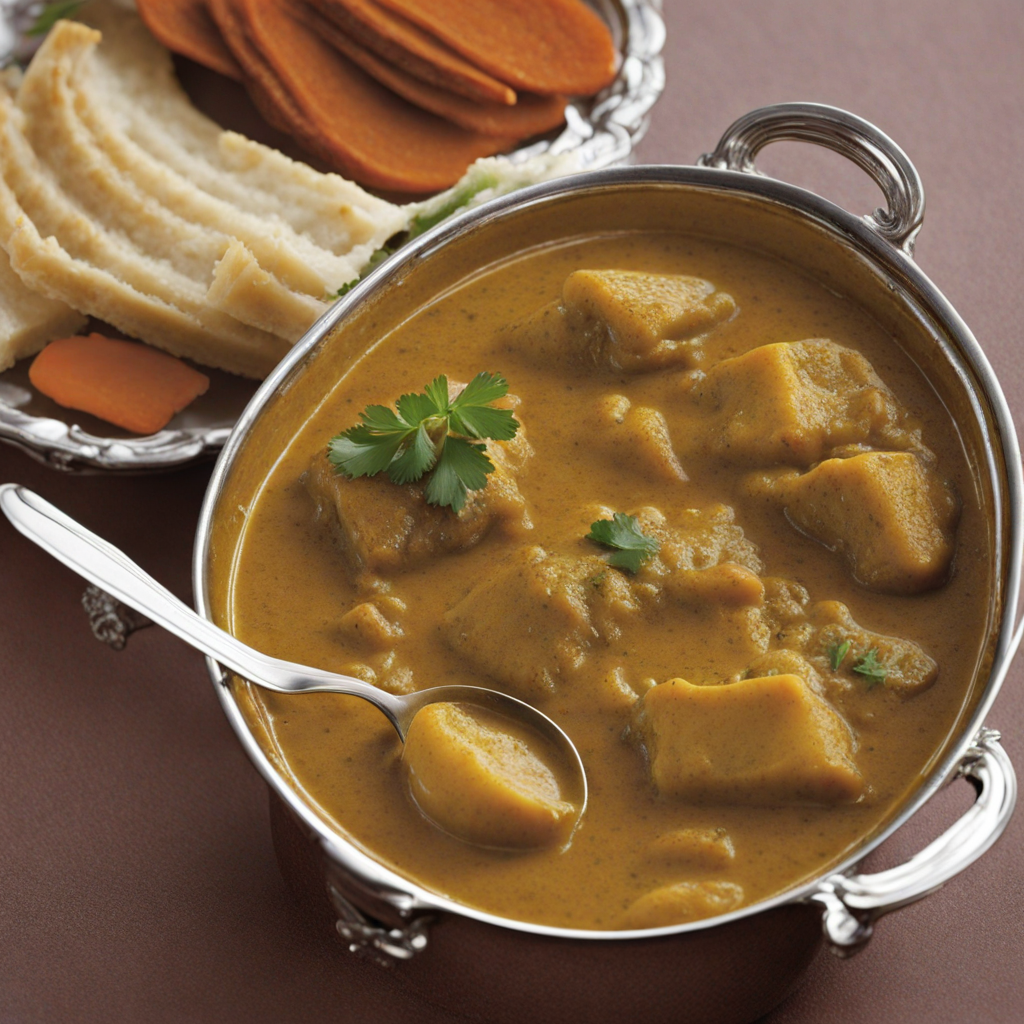Æbleflæsk
Æbleflæsk is a traditional Danish dish that beautifully marries sweet and savory flavors, creating a unique culinary experience. At its core, this dish consists of thinly sliced pork, typically bacon or fatty pork, that is rendered until crispy and then combined with tart apples. The apples are usually sautéed until soft, allowing their natural sweetness to meld with the rich, salty notes of the pork, resulting in a harmonious balance that tantalizes the taste buds. The dish is often seasoned with cinnamon or cloves, adding a warm spice that enhances the overall flavor profile and evokes a sense of comfort and nostalgia. Served often as a breakfast or brunch option, Æbleflæsk is typically accompanied by dense rye bread or dark bread, which serves as a perfect vehicle for scooping up the delicious mixture. This combination not only provides a textural contrast but also adds a hearty element that makes the dish satisfying. The crispiness of the pork juxtaposed with the tender, sweet apples creates a delightful mouthfeel that is both indulgent and invigorating. Some variations might include onions or even a drizzle of syrup, which further elevates the sweet-salty dynamic, making each bite a memorable one. Æbleflæsk is more than just a dish; it is a celebration of Danish culinary heritage, often enjoyed during festive occasions or family gatherings. The act of preparing and sharing this dish brings people together, showcasing the warmth of Danish hospitality. For those looking to explore new flavors, Æbleflæsk offers a delightful journey into the heart of Danish cuisine, where simple ingredients transform into a comforting and flavorful experience that lingers long after the last bite.
How It Became This Dish
Æbleflæsk: A Cultural and Culinary Journey through Denmark Denmark, a land known for its picturesque landscapes, rich history, and vibrant culture, boasts a culinary tradition that is deeply intertwined with its agricultural heritage and seasonal rhythms. Among the many traditional foods that represent this heritage, Æbleflæsk stands out as a unique dish that encapsulates the spirit of Danish cuisine. This delightful combination of apples and pork has a history steeped in both necessity and festivity, serving as a testament to the resourcefulness of Danish farmers and the evolving nature of food in Denmark. Origins of Æbleflæsk Æbleflæsk, which translates to "apple bacon," is a dish that dates back to the Middle Ages, a period when the foundations of Danish cuisine were being established. The word "flæsk" refers to pork, and it is commonly believed that Æbleflæsk originated as a way for farmers to make use of the abundant apple harvest in the fall. Apples were a staple fruit in Denmark, cultivated since the Viking Age, and they were often used in various forms, from fresh eating to preservation as cider or compote. In rural communities, resources were limited, and the preservation of food was crucial for survival during the harsh winter months. Combining apples with salted or cured pork represented a practical way to utilize both the harvest and livestock, creating a dish that was not only flavorful but also packed with energy. The sweet and savory combination of Æbleflæsk reflected the balance that is characteristic of much of Scandinavian cuisine, where ingredients are often paired in unexpected yet harmonious ways. Cultural Significance Æbleflæsk holds a special place in Danish culinary culture, symbolizing the connection between food, community, and the changing seasons. Traditionally, it was a dish prepared during the autumn months when apples were harvested. The preparation of Æbleflæsk often took place during family gatherings or communal events, making it a dish that fostered togetherness and celebration. In Danish households, Æbleflæsk was not merely a meal; it became a part of cultural rituals. It was often served during festive occasions, particularly around Christmas, when the combination of sweet and savory flavors complemented the richness of the holiday season. The dish was typically accompanied by rye bread, a staple in Danish cuisine, embodying the philosophy of using what was locally available and in season. Moreover, Æbleflæsk reflects the broader themes of Danish culinary traditions, which emphasize simplicity, sustainability, and the importance of local ingredients. The dish serves as a reminder of the agricultural practices that have shaped the landscape of Denmark, where farming and foraging have been integral to the Danish identity. Development Over Time As Denmark entered the modern era, the preparation and presentation of Æbleflæsk began to evolve. The industrial revolution brought changes in food production and preservation techniques, leading to the widespread availability of ingredients and the decline of traditional farming practices. Despite these changes, Æbleflæsk remained a beloved dish, adapting to new culinary trends while retaining its classic appeal. In the 20th century, as Danish cuisine began to gain recognition on the international stage, chefs and home cooks alike started to reinvent traditional recipes, including Æbleflæsk. Contemporary versions of the dish often feature gourmet twists, such as the use of artisanal cured meats, heirloom apple varieties, and innovative cooking techniques. These adaptations have not only modernized Æbleflæsk but have also introduced it to a new generation of food lovers, both in Denmark and abroad. The rise of the New Nordic cuisine movement in the early 21st century has further revitalized interest in traditional Danish dishes, including Æbleflæsk. Chefs have embraced the philosophy of using local, seasonal ingredients while also respecting traditional methods. Æbleflæsk has found its way onto the menus of fine dining establishments, where it is presented as a sophisticated dish that pays homage to its rustic roots while appealing to modern palates. In recent years, the dish has also been celebrated in various food festivals and events that highlight Danish culinary heritage. Local farmers’ markets and specialty food shops have embraced Æbleflæsk, offering artisanal versions made with high-quality ingredients. This resurgence has not only contributed to the preservation of the dish but has also sparked a renewed interest in Danish culinary traditions as a whole. Æbleflæsk Today Today, Æbleflæsk continues to be a cherished part of Danish culinary culture. It is commonly served in homes during the autumn and winter months, particularly around Christmas time. The dish can be prepared in various ways, but it typically includes sautéed or fried slices of pork, often combined with caramelized apples, onions, and spices such as cinnamon or cloves. Some variations may include the addition of other ingredients, such as maple syrup or mustard, to enhance the flavor profile. The serving of Æbleflæsk is often accompanied by dense rye bread, which serves to balance the richness of the pork and the sweetness of the apples. This combination not only adds texture but also embodies the traditional Danish approach to food—simple, hearty, and satisfying. Moreover, Æbleflæsk has transcended its humble origins to become a symbol of Danish identity, celebrated for its historical roots and cultural significance. It is a dish that tells the story of a nation, reflecting the interplay between agriculture, community, and celebration. As Denmark continues to evolve in the global culinary landscape, Æbleflæsk remains a beloved reminder of the importance of tradition, seasonality, and the enduring connection between food and culture. In conclusion, Æbleflæsk is far more than just a dish; it is a culinary narrative that encapsulates the essence of Danish life. From its historical origins rooted in necessity to its modern interpretations that celebrate local ingredients and tradition, Æbleflæsk embodies the spirit of Denmark—simple, hearty, and deeply connected to the land and its people.
You may like
Discover local flavors from Denmark







